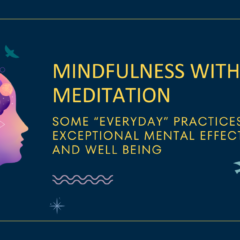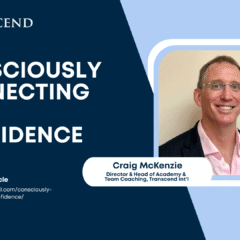People all over the world have been invited/forced/embraced/resisted/challenged – pick the word that connects to your experience, and then keep reading – with a much larger portion of their work being virtual and in teams.
This means whether we like it or not we have been ushered into the world of Virtual Teams.
For virtual or largely virtual organisations nothing has really changed. For others, this major shift in working context has been abrupt and challenging.
In this practical article, I will explore some of the common experiences of teams and team leaders. You will hopefully relate to some of them, discover you are not alone, be inspired in new ways and gain some insights for yourself and your team. And secondly, I will offer some tips and practices based on our Team Coaching experience and methodology to help teams and team leaders make collective mindset shifts, improve performance and the systems that support performance. Then the next steps are yours to take.
As experienced team coaches, we have extensive experience and exposure to a variety of Virtual Team structures. Fully Virtual Teams, where every team member is remote. Blended Virtual Teams, where some team members are remote. Virtual Team Leaders who, for the most part, are not present with their teams, or spend more time with one/some of the teams they lead. And then there are evolving expressions of all of the above and more.
In the lockdown reality there are some interesting functional and relational challenges particularly for teams that used to work predominantly in person:
- Teams that used to be physically close to each other are now further apart. This can impact in some interesting ways. For example, a dominant team member may experience a loss in power or control that used to be accentuated through their presence.
- In fact, as Professor David Clutterbuck mentions in his 2017 article, Team Coaching Virtual Teams, “There is also some evidence that power distance (people’s inclination to defer to someone with greater rank or authority) reduces when using distance media. This means Team Leaders may express both real or imagined shifts in their sense of authority.
- Team meetings where people could disengage or hide in the “room” are now replaced with Gallery view on screens and everyone can see who is focused and who is not. Or worse, team members and team leaders can “appear” to be looking at their team and be actually engaged with other content (chat, video, Facebook, LinkedIn, emails, or even porn) on their computer screen.
- Conflict and challenging conversations can become more difficult for some or less personal for others – so we may be more abrupt and less careful in our words with a computer between us. Often the “online” version of ourselves is not as optimal in communication and interpersonal skills.
- Side conversations can move to private chats and this is less visually obvious and more disruptive.
- Distractions are less obvious. A meeting room created a context. Now each team member has their own unique context – most of which is unseen by the other participants and includes their home life.
- Blended Virtual Team members will experience shifts as well. The team members who were always virtual may feel closer to the team or disrupted by the changes in their own ways of working. Team members who prefer and excel in face to face environments may experience discomfort in adapting to the virtual team context.
All of that is about the experience of the Virtual Team. These factors and many more will impact team performance and team processes!
In our work in the training and certification of Team Coaches we partner with Coaching and Mentoring International and function as Assistant Faculty with the recently launched Global Team Coaching Institute, with David Clutterbuck and Peter Hawkins.
Professor David Clutterbuck recently shared some new thoughts with our network in a presentation entitled Thriving in Adversity: Maintaining team performance under lockdown. This point form style article flow is designed for you to quickly find something helpful you can put into practice. What can you find that you can “Do right away”?
The Problem(s)
- Teams that have never previously worked virtually struggle to maintain cohesion
- Leadership style in a co-located space may not work virtually
- Social interaction is key to effective collaborative work
- Anxieties increase when there is little social interaction
- Virtual teams generally don’t perform as well as co-located teams; so newly virtual teams may struggle even more
The Opportunity
If teams return to work after the crisis and carry on as before, a vast opportunity will have been lost. We have a remarkable opportunity for reflection, for learning to work in new and more effective ways, for connecting with each other and our stakeholders. Hope and resilience lie in seizing the opportunities in adversity.
The PERILL Model (A brief overview)
The model that has been developed as a resource to guide teams and team coaches to intentionally, efficiently and sustainably develop. The PERILL model is a complex, adaptive systems approach to team function and dysfunction. This model enables us to view the team through the complete lens of the model or identify specific areas to focus on. It provides a practical, evidence-based way for teams to re-evaluate themselves and create durable change. The basic assumption is that everything in the team system is influenced by everything else. Trying to fix single problems usually won’t provide lasting solutions, because the system as a whole tries to return to the status quo.
The 6 Interacting Elements of the PERILL Model
- Purpose and motivation – what are we here for?
- External systems & processes – how do we interact with stakeholders?
- Relationships — how do we interact with and support each other?
- Internal systems & processes – how do we make decisions, manage quality etc?
- Learning – how do we evolve at least as fast as our environment changes?
- Leadership – how do we ensure all the functions of leadership [as opposed to “being the leader”] are covered?
So what?
All this is very nice and structured and theoretical. Here are some practical ways to create value. I have structured this into a focus on Team Leaders, Team Members and Team Coaches.
For Team Leaders
Choose one of the Elements to focus on, set aside some time with your team and ask open questions to begin.
Purpose and motivation
- What can we do to help each other maintain our energy and sense of purpose?
External systems & processes
- How are our stakeholders experiencing the crisis?
Relationships – In the team
- How can we show each other that we care about their well-being?
Internal systems & processes
- Use the disruption of the Covid crisis to discuss team meeting effectiveness and to look at lines of communication.
– How can we make our meetings more effective?
– What lines of communication are being revealed as “problematic” in this new lockdown environment?
- Examine processes and protocols for making decisions. Can we make them better and more consistent?
Learning
- How will we capture the learning from this experience and use it to good effect?
- How will our competitors be adapting to the world after the crisis?
Leadership Qualities and Behaviours
- Leaders can ask their teams:
– What do you need from me now to help you perform at your best?
– What do you need me to do less of and more of?
- Leaders can ask themselves:
– How is my role changing in this environment?
– How can I be more adaptive?
Team Members
Choose one of the Elements to focus on, set aside some time to reflect on your own or use the question to create a conversation with the team.
Purpose and motivation
- What do I need to do to remain energetic and focused?
External systems & processes
- Who are the stakeholders I am connected to?
- What do they need from me right now?
Relationships – In the team
- How can I adjust my online and offline behaviour, style and habits to build trust?
Internal systems & processes
- Which areas of our team processes am I noticing are strained or ineffective?
- What do we need to do about them?
Learning
- What am I learning about myself and our team?
Leadership Qualities and Behaviours
- Which “functions” of leadership are missing or missing in action?
- And, how can I supply them or bring it into the team for discussion?
For Team Coaches
Reflect on the PERILL model and use your skills in developing insightful and challenging questions to help the teams that you work with. Or, dialogue with us around how you can leverage this model to make your work with teams even more valuable.
Concluding thoughts
The world has moved. Teams and Team Leaders and the Organisations that contain them need to adapt. There is nothing that compares to an investment in highly skilled professional Team Coaching to ensure timely and effective adaptations. Team Leaders and Teams can begin by asking some questions of themselves and each other. Begin right now!
Related Posts
Embracing Authenticity: The Pathway to Thriving in an Ever-Changing Landscape

In the face of today’s dynamic work environment, remaining true…




